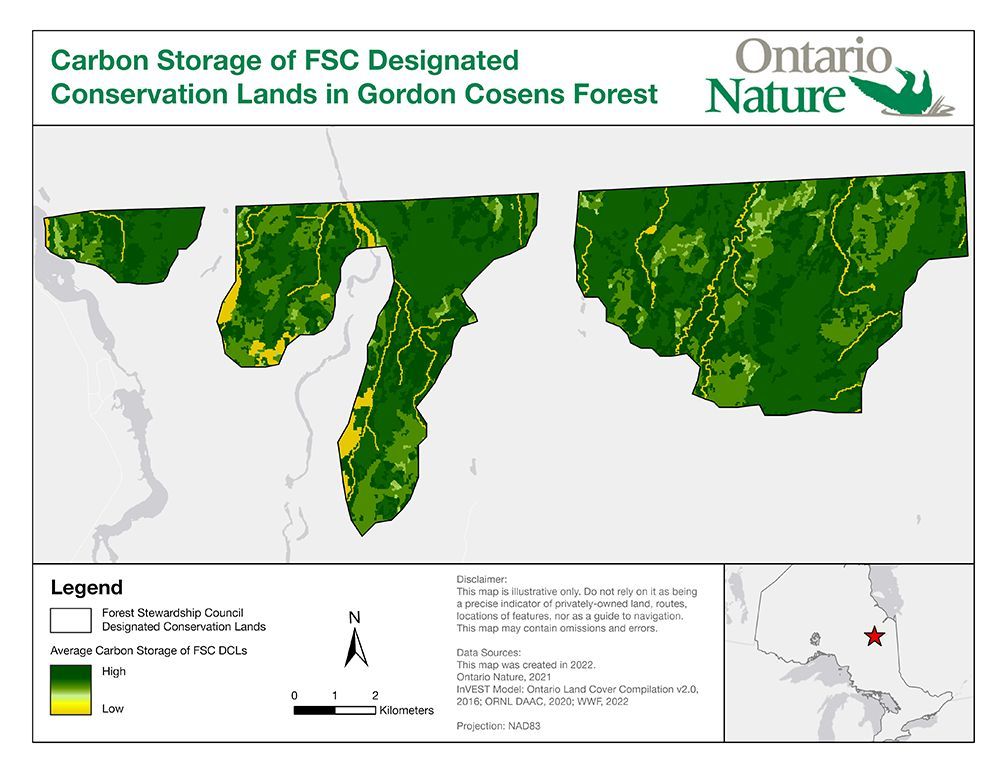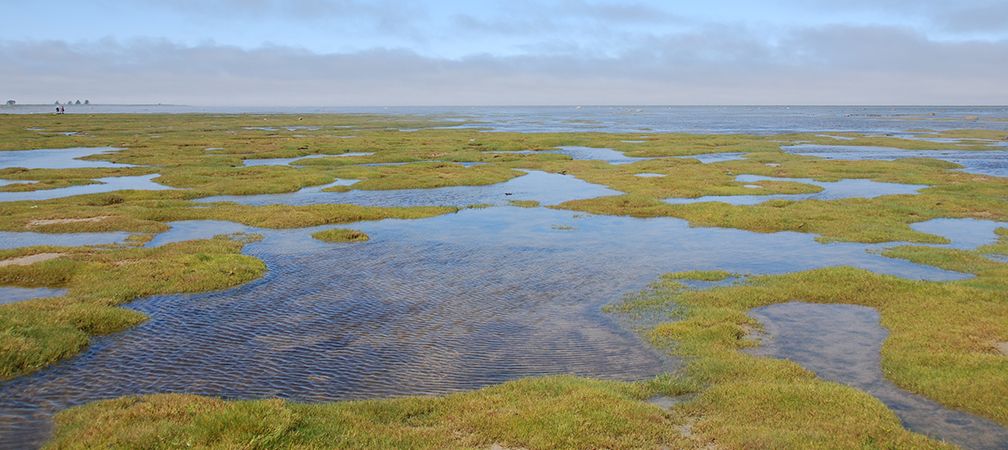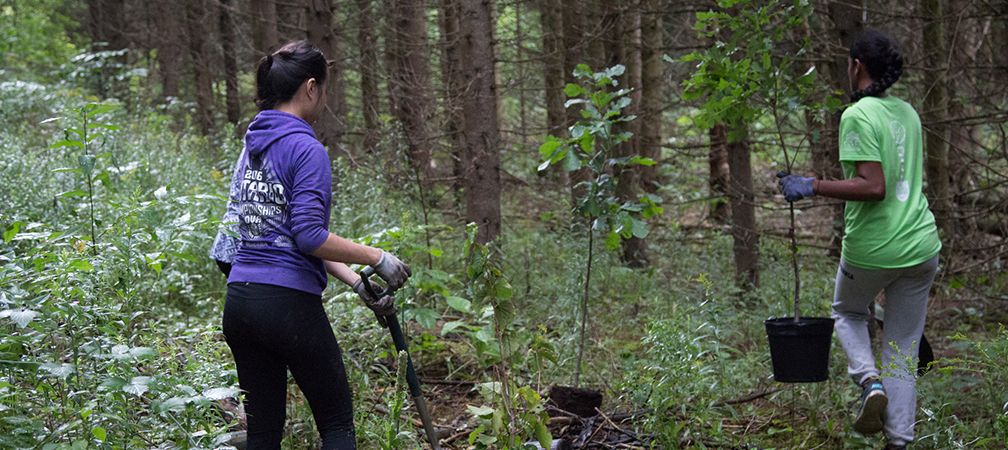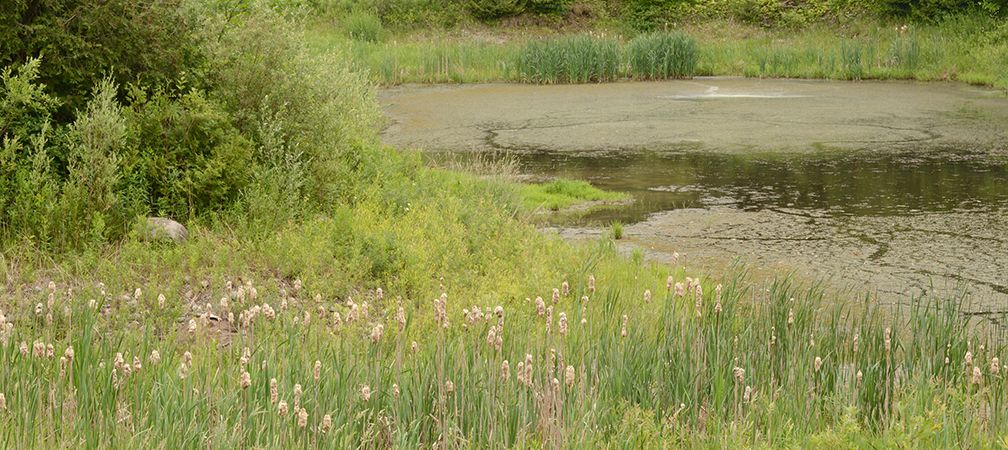Ontario Nature Blog
Receive email alerts about breaking conservation
and environmental news.
© Lora Denis
Cawthra Mulock Nature Reserve © Noah Cole
Ontario’s conservation challenges are growing. Each year, more plants and animal are added to species at risk list, with climate change increasing the likelihood of extinction.
However, conservation organizations, including Ontario Nature, are working to address the dual threats of climate change and biodiversity loss by protecting carbon stocks and supporting carbon sequestration.
Over the past six months, I’ve met with scientists, members of Indigenous communities, environmental organizations, and Conservation Authorities to learn about their nature-based carbon projects. Keep reading to learn about four projects aimed at addressing climate change and nature conservation in Ontario. I hope you find them inspiring!
Ontario Nature’s Protected Places team is calculating how much carbon is stored in Forest Stewardship Council (FSC) Designated Conservation Lands in Ontario. So far, our results show that FSC-designated conservation lands store more carbon than the surrounding forest used for industrial logging.
We’ll use these results, along with our assessments of conservation values, to advocate for the permanent protection of over 147 FSC-designated conservation lands in the province. This could help protect over 1 million hectares of land across Ontario.

This project is funded by the Metcalf Foundation, the Max Bell Foundation, an anonymous donor, and Ontario Nature’s donors and supporters.
WWF-Canada, McMaster University and Mushkegowuk Council have partnered on a carbon sampling fieldwork project in the Hudson and James Bay Lowlands. This area is the third-largest wetland in the world, and according to WWF-Canada’s national carbon map, it is a massive carbon reservoir.
This summer, they’re training local community members in soil sampling techniques. Collecting field samples will provide a more accurate carbon storage estimate and validate their mapping, known as “ground-truthing.”
The results of this project will help inform community and regional decision-making and conservation efforts in Mushkegowuk Territory.

In partnership with the Toronto and Region Conservation Authority and Lake Simcoe Region Conservation Authority, Credit Valley Conservation recently developed a standardized carbon assessment guide and toolbox for Southern Ontario.
Using methods from their guide, Credit Valley Conservation estimated carbon sequestration by trees they planted between 2009 and 2019 and found that in just ten years, the trees sequestered almost 10,000 tonnes of carbon (equal to the number of emissions produced annually by nearly 8,000 cars).
The results of this project can be used to measure restoration success over time and help inform climate change mitigation strategies.

In 2020, Lake Simcoe Region Conservation Authority partnered with the University of Toronto and Lakehead University to estimate annual carbon sequestration rates of forests and wetlands in the Lake Simcoe watershed.
They found that wetlands in the Lake Simcoe watershed sequester almost five times more carbon than the local forests indicating the importance of protecting these ecosystems from projects like the Bradford Bypass. They also found that the invasive wetland grass, Phragmites, sequesters more carbon than many native wetland plants suggesting that biodiversity goals can sometimes be at odds with climate change goals.
These results were used to develop a climate change mitigation strategy for the Lake Simcoe watershed, which focuses on wetland protection and incorporates biodiversity goals into management and restoration practices.

It is heartening to learn about the local carbon storage and sequestration projects supporting efforts to mitigate climate change and biodiversity loss. I’m grateful to have connected with those involved to learn more about their carbon projects, and I always leave these conversations feeling more hopeful about our future. I look forward to continuing the conversation around carbon assessments and starting new ones too.
If you haven’t started or are just beginning this work, Ontario Nature is releasing a guide and recommendations for measuring carbon stocks to support conservation initiatives soon, so stay tuned!
To learn more about our work with FSC, watch our video “Protecting 1 million hectares in FSC-certified forests” and visit our Story Map to learn about FSC designated conservation lands and other candidate areas.
You can join us in protecting one million hectares of northern Ontario forests and wetlands by donating here: ontarionature.thankyou4caring.org/donation-pages/protected-places.

Gananoque Lake Nature Reserve © Smera Sukumar